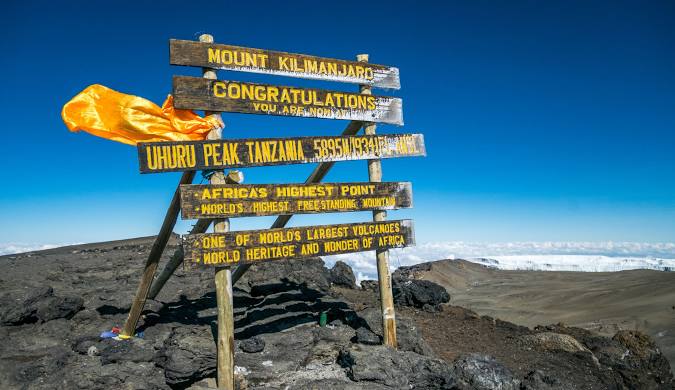Kilimanjaro Mountain
Giant Kingfisher
Tawny Eagle in Serengeti National Park
Bateleur on flight in Tarangire National Park
Flamingoes in Lake Natron
African white backed vulture
Lesser masked in Tarangire National Park
Secretary bird in Serengeti National Park
Lilac breasted roller in Serengeti National Park
Golden Winged Sunbird
Ostrich
Previous
Next
Africa’s Highest Peak
- Elevation: 5,895 meters (19,341 feet) above sea level.
- Significance: highest free standing Mountain in the world and the tallest in Africa.
- One of the Seven Summits the highest mountains on each continent.
Location
- Country: Tanzania
- Nearest Towns: Moshi and Arusha
- National Park: Kilimanjaro National Park (UNESCO World Heritage Site)
Popular Routes to the Summit: There are 7 main trekking routes, each with different scenery, difficulty, and success rates:
Route Duration Difficulty Scenery Notes;
- Marangu 5-6 days Medium Moderate only route with hut accommodation.
- Machame 6-7 days High Excellent Most popular, scenic & steep.
- Lemosho 7-8 days Medium Excellent Great acclimatization.
- Rongai 6-7 days Medium Good Drier side of the mountain
- Northern Circuit 8-9 days Moderate Exceptional Longest & best acclimatization
- Shira 7-8 days Medium Excellent Starts high, joins Lemosho Umbwe 5-6 days Difficult Scenic Very steep, for experienced trekkers
Why Visit Kilimanjaro?
- Bucket-list achievement for hikers and adventurers.
- Unique ecological zones: rainforest, moorland, alpine desert, and arctic summit.
- Non-technical climb — no ropes or special equipment needed (just good fitness).
- Breathtaking sunrise from Uhuru Peak.
Best Time to Climb
- Dry seasons:
- January to early March
- June to October
- Avoid the rainy seasons (April–May and November
Travel Tips
- Permit required – must be part of a guided trek.
- Altitude sickness is real choose longer routes for better acclimatization.
- Pack layers – you’ll go from hot to freezing temperatures.






